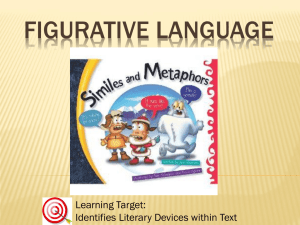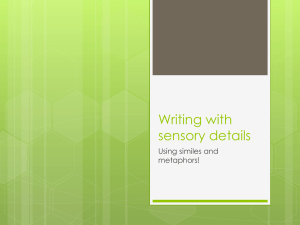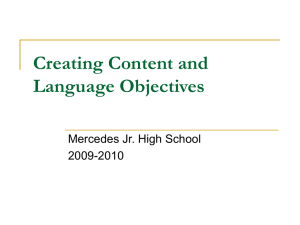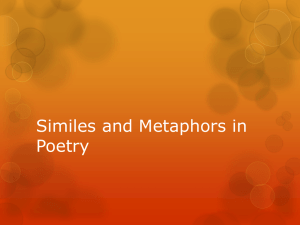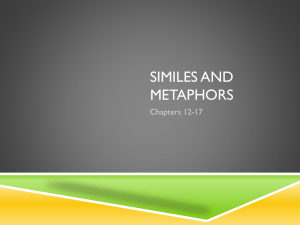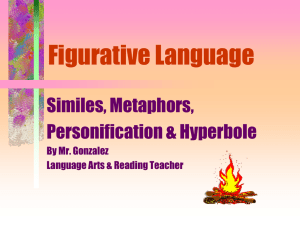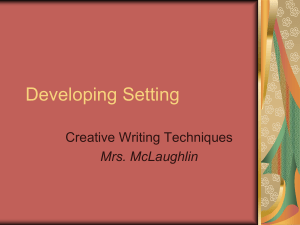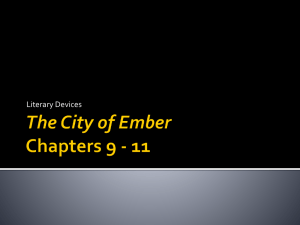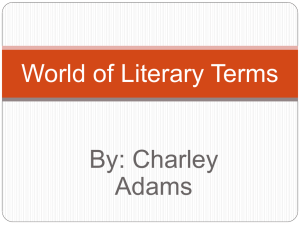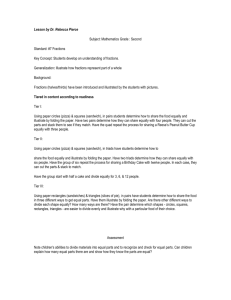Examples of Tiered Lessons
advertisement
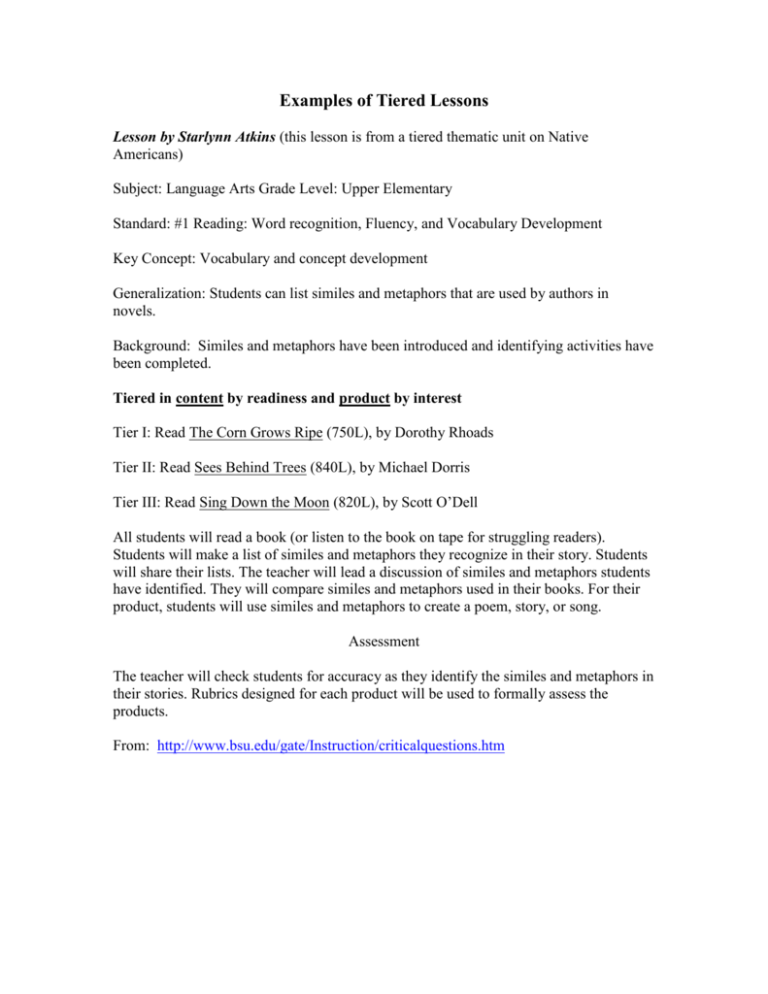
Examples of Tiered Lessons Lesson by Starlynn Atkins (this lesson is from a tiered thematic unit on Native Americans) Subject: Language Arts Grade Level: Upper Elementary Standard: #1 Reading: Word recognition, Fluency, and Vocabulary Development Key Concept: Vocabulary and concept development Generalization: Students can list similes and metaphors that are used by authors in novels. Background: Similes and metaphors have been introduced and identifying activities have been completed. Tiered in content by readiness and product by interest Tier I: Read The Corn Grows Ripe (750L), by Dorothy Rhoads Tier II: Read Sees Behind Trees (840L), by Michael Dorris Tier III: Read Sing Down the Moon (820L), by Scott O’Dell All students will read a book (or listen to the book on tape for struggling readers). Students will make a list of similes and metaphors they recognize in their story. Students will share their lists. The teacher will lead a discussion of similes and metaphors students have identified. They will compare similes and metaphors used in their books. For their product, students will use similes and metaphors to create a poem, story, or song. Assessment The teacher will check students for accuracy as they identify the similes and metaphors in their stories. Rubrics designed for each product will be used to formally assess the products. From: http://www.bsu.edu/gate/Instruction/criticalquestions.htm Subject: Language Arts Grade: Fifth Standard: #2 Reading: Comprehension Key Concept: Make and Revise Predictions Generalization: Novels are written in a way that offers students a chance to make predictions about things that will happen next in the story. They can revise their predictions as they find out what really happens next. The process of making and revising predictions is helpful in making sense of actual events that happen in their lives. Background: Students have been reading a novel ( in the example, The Witch of Blackbird Pond by Elizabeth George Speare). They have just finished the first chapter and will make predictions based on the events that have transpired. Their predictions will come in written form and will be turned in at the end of class. This lesson is tiered in product according to readiness. Tier I: Below Grade Level Learners These students need to understand the events of the first chapter of the novel. They will have read the chapter but will answer questions given to them to check on their comprehension of the facts of the chapter first. After understanding the facts, they will write a letter from Kit to her friend in Barbados telling what she expects will happen next. The letter needs to be turned in at the end of the class. Tier II: Grade Level Learners These students will analyze the events in chapter one. They will analyze according to Kit's thoughts concerning her "disappointment in America." They will focus on analysis of why America would be disappointing to a person who was coming from Barbados. They will do a prewriting exercise of creating a Venn diagram that shows a comparison of America (as Kit sees it) and Barbados (as Kit remembers it). Then they’ll use their information to write a journal entry from Kit's point of view that explains why she is so disappointed and predicts what she thinks will happen next. Journal entries will be turned in at the end of the class. Tier III: Above Grade Level Learners: These students will synthesize the words used in Chapter 1 according to what the words help them learn about Kit. They will then predict what will happen next from a synthesis of the words used to tell the events in the first chapter. Important words to present to them to begin their search are embarrassment (p.6), dourlooking (p.7), impulsively (p.8), Heathen Island (p.11), Puritans (p.12), humiliation (p.13), respectable woman (p. 13), and nonchalance (p. 14). If they do not know word meanings, they should begin their search in a dictionary. Then they should write Kit's explanation (in any form they choose) of what has happened and what she predicts next. They’ll turn in the piece at the end of class. Assessment: Each group has actually worked on a product during the class period that you can assess. They should turn in any prewriting materials (i.e. Venn Diagrams, worksheets, and dictionary definitions if they needed to search for them) along with the finished product. There is plenty to assess in this assignment. From: http://ideanet.doe.state.in.us/exceptional/gt/tiered_curriculum/languagearts/la5r.htm
